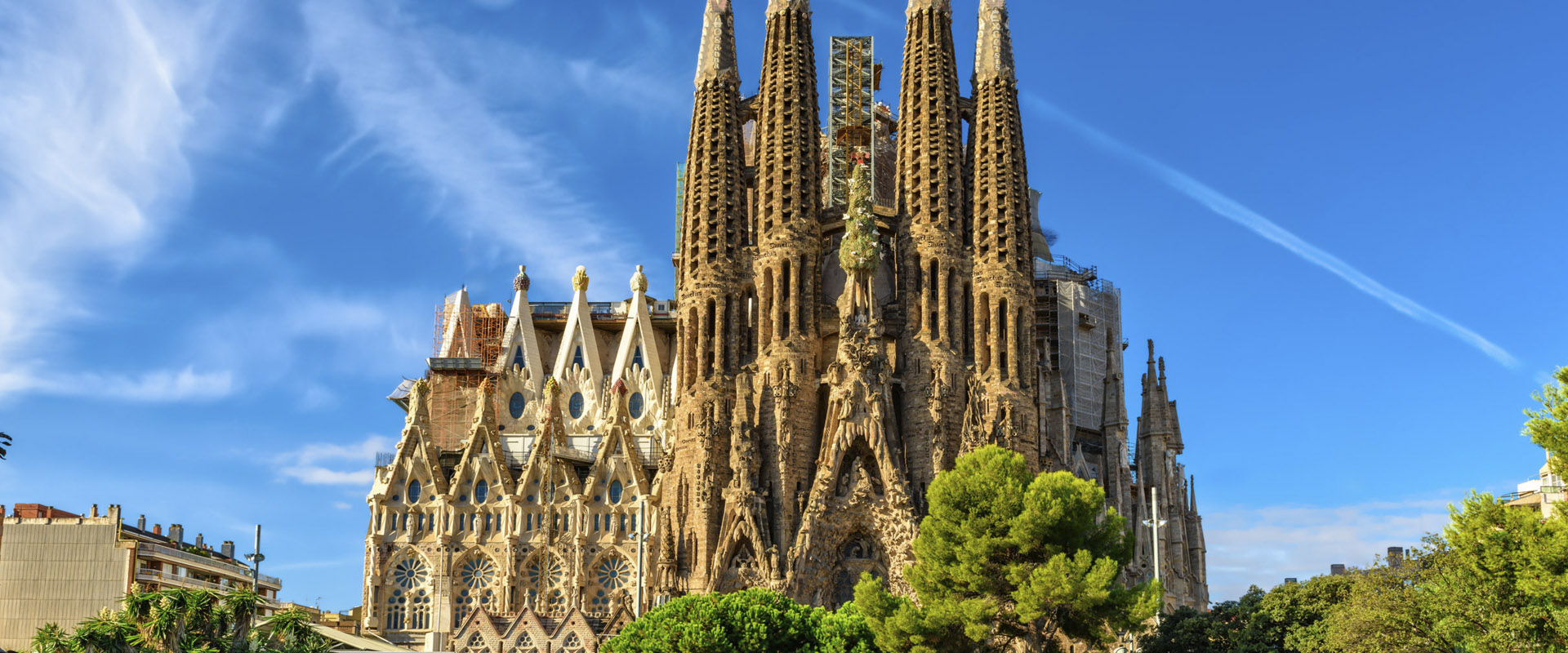
Sagrada Família 1882 – 2026
A Living History…
An exceptional temple, the work of Antoni Gaudí, remarkable both for its origins and foundation as well as its purpose. Five generations have witnessed the evolution of the temple in Barcelona. Today, construction continues and may be completed during the first third of the 21st century.
Talking about tourism in Barcelona inevitably means visiting the Sagrada Família, the most visited monument in Spain, attracting over 4 million tourists per year.
Antoni Gaudí (1852-1926)
Gaudí was a student who excelled in subjects such as project design, drawing, and mathematical calculations. In 1878, with a degree in architecture, he received his first official commission. Later, he took on larger-scale works commissioned by the bourgeoisie, including Casa Calvet, Casa Batlló, and Casa Milà, among others. In 1883, he undertook the project of the Sagrada Família.
Notable elements of the Basilica of the Sagrada Família include the towers—so far, 8 of the 18 towers designed by Gaudí have been constructed—the 3 symbolic façades (Nativity, Passion, and Glory), and the temple’s interior, composed of tree-trunk-shaped columns.
On the Passion Façade of the Expiatory Temple of the Sagrada Família, visitors can observe the “magic square” or “magic grid,” which features numbers ranging from 1 to 15. This grid allows for 310 different combinations, and no matter how the numbers are added, the result is always 33—the age at which Jesus Christ died.
An Exhibition of Art
The starting point of the Sagrada Família was Gothic architecture, which Gaudí modified and improved to propose a new form of architecture. Due to its originality, this temple stands as a unique masterpiece.
Gaudí sought to construct a building that would shape the urban landscape of the city while simultaneously displaying his reverence for God’s creation. In his view, humankind should never surpass God’s work—this is why, at 172.5 meters tall, the Sagrada Família is one of the tallest religious buildings in the world, but remains several meters shorter than Montjuïc, the tallest hill in Barcelona.
To bring splendor and expressiveness to his architecture, Gaudí relied on light. Sunbeams illuminate the pinnacles placed atop all the towers and the windows. The morning sunlight brightens the portals of the Nativity Façade, highlighting the joy of life represented by the birth of Jesus.
On the Passion Façade, the interplay between light and shadows created by the setting sun emphasizes the façade’s harsh and austere character. Meanwhile, on the Glory Façade,the midday sun illuminates the sixteen lanterns of the monumental porch and the main entrance to the basilica.
Don’t forget to visit it!